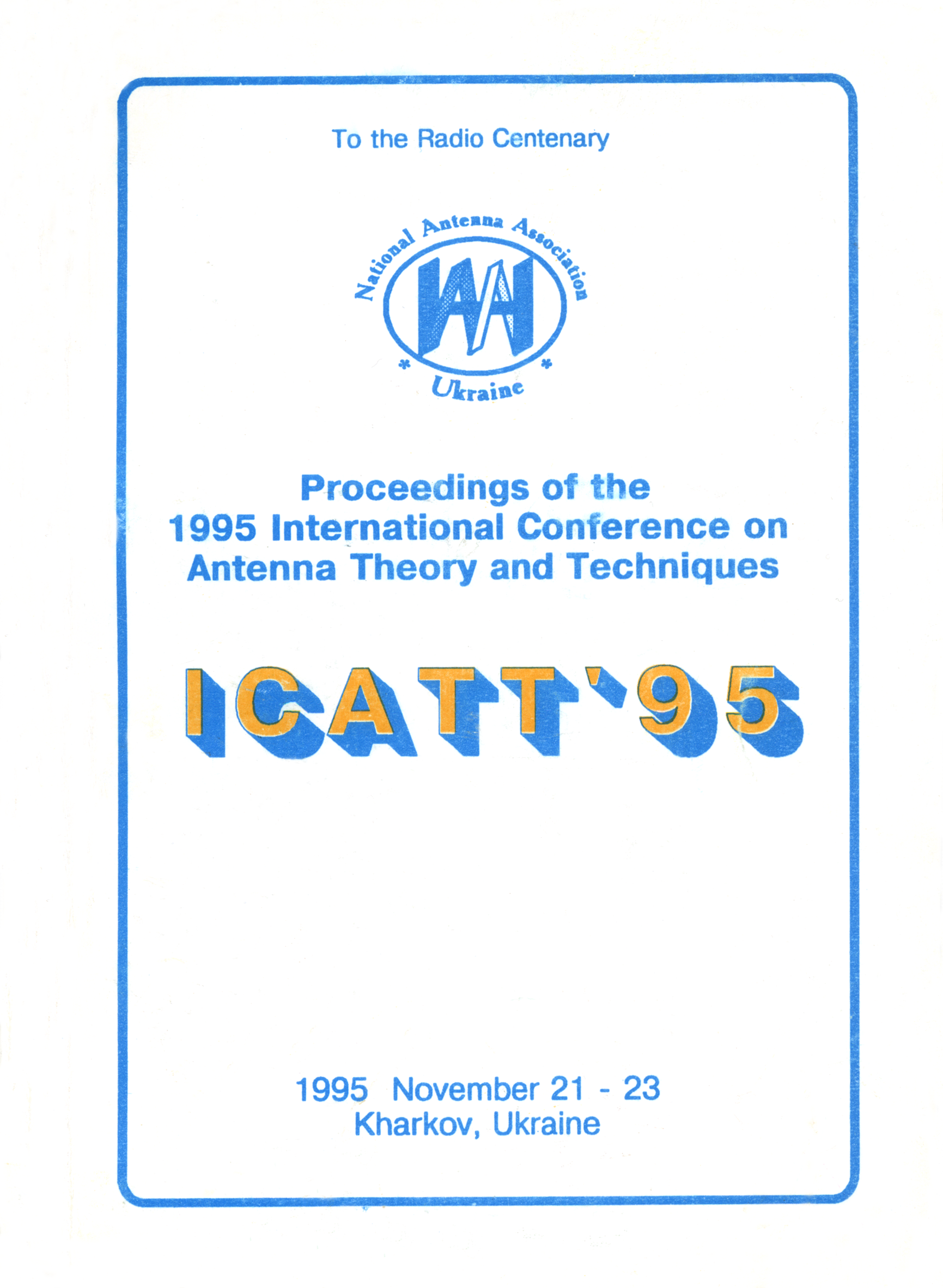Planar multibeam antenna
DOI:
https://doi.org/10.1109/ICATT.1995.1234132Abstract
The effect of the transformation of a non-homogeneous plane wave into a space one is gaining a wider application in antenna techniques. A planar dielectric waveguide is used as a source of non-homogeneous plane wave. The transformation of a slow surface-wave mode into a space wave is realized by using a diffraction grating. Electromagnetic analysis of the given structure was carried out and the methods of realization of multibeam radiation pattern with independent beams were determined. An antenna model with six beams was designed and investigated.
The antenna model consists of a planar dielectric waveguide made of teflon and a diffraction grating of the comb type with the aperture 150x500 mm2. In the wave range of 8-10 mm the phase velocity slowing coefficient of the main E-wave is varied within U = 1.18-1.13. Excitation unit of the planar dielectric waveguide is formed by a planar lens with an output aperture 150 mm placed in parallel-plate metallic waveguide. Open ends of rectangular metallic waveguides with inserted dielectric rods were used as feeds. If the number of lens feeds equals to three, then three beams are formed in the vertical plane with independent inputs. The use of one more lens with analogous feeds for excitation of the planar dielectric waveguide from the opposite side increases the number of beams to six. To decrease the antenna dimensions, 180° waveguide E-plane bends were used, so that planar lenses were placed under the diffraction grating. The width of the radiation pattern of each beam was measured as 1x3.4° at the 8-mm wavelength. The nulls between the neighboring beams were at the level -3 dB. The change of the working wavelength from 8 to 10 mm led to the simultaneous deflection of each group of three beams by 16° in the horizontal plane. Thus the antenna may be used for the frequency scanning by three beams in the full angular sector of 32°. The level of side lobes does not exceed 18 dB and the losses are not more than 2 dB.

